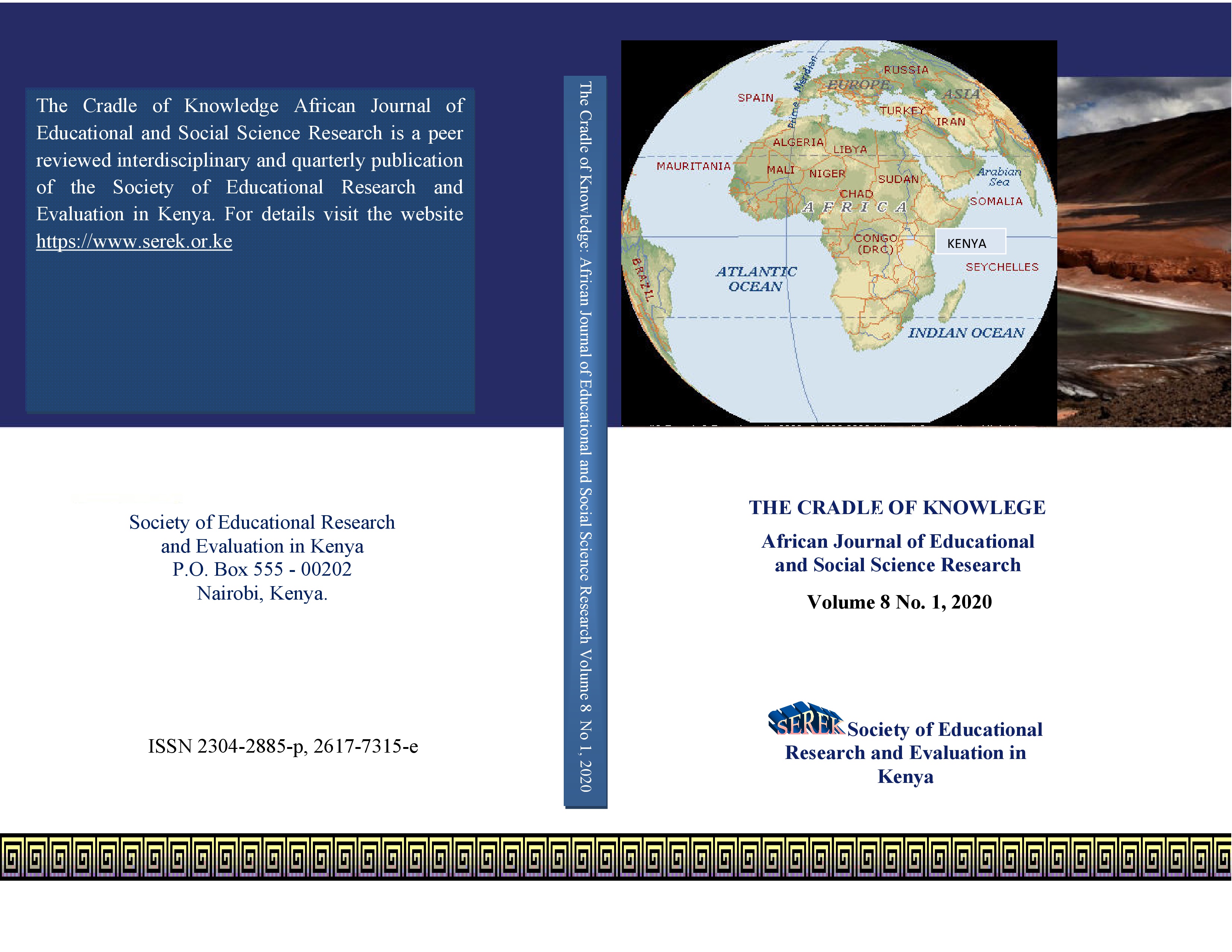
Effect of Teaching through Problem - Solving on Students’ Performance in Mathematics in Secondary School in Murang’a County, Kenya
Abstract
Students’ are weak in curriculum outcomes in Mathematics at National examinations of secondary school education have been of concern to primary and secondary stakeholders. The concern was that result determines student’s participation in science oriented programmes at tertiary level. Many interventions have been put in place to avoid but performance persisted. Science programmes support Kenya development agenda as described in the current vision 2030 including social, economic, political technological and industrial development. The pedagogical interventions had been done in various Counties. The study examined effect of teaching through problem – solving on students’ achievements in Mathematics in secondary schools in Murang’a County, Kenya. This County was among 47 counties, but it was favoured because of climatic condition and assessable roads to schools. The study investigated students’ performance in Mathematics for those taught using problem - solving strategies with those taught using conventional strategies. The study employed quasi – experimental design using Solomon Four Group model. The target population was 28485 students in 340 secondary schools in Murang’a County. These schools were purposely stratified into four categories according to their performance in national examination past four years. Four schools from each stratum were randomly distributed into four groups. Two groups E1 and E2 were assigned as experimental groups whereas other two C1 and C2 as control groups. A total of 16 schools: 8 schools experimental and 8 schools, control. Sample size of 544 students and 16 teachers were involved in the study. Pretest and posttest Students’ Mathematics Achievement Questionnaire were constructed by national examiners and moderated by senior examiners not in sampled schools. Eight schools participated in pre-test in E1 and C1 and all 16 schools received post- test Mathematics achievements tests after intervention. In order to establish significance means difference between students taught through problem – solving and those taught through conventional strategies paired t –tests and Cohen’s d effect measure were used. Problem – solving method improved students’ performance and teachers should embrace facilitating Mathematics in an environment contributing to better achievement.
Keywords: Mathematics achievement; Problem Solving; performance; Attitudes.
Full Text:
PDFReferences
Cox, B. (2011) A Development Topology of Faculty Student Interaction outside ClassroomDownloaded.https:do.org/10.1002/ir.416, Wiley online library
Hull, T., Baika, D., & Miles J., (2011) Visible Thinking in the K-8MathematicsClassroom; thousand Oaks, CA: Corwin A Sage Company
Kenya Vision 2030, Government of Kenya, www.vision2030.go.ke, 2010.
Lawson, A. (2016). The Mathematical Territory between Direct Modeling & Proficiency Student Achievement Downloaded http/www.edu.gov.ca/eng
McLeod, D. & Adams, V., (2015) Affect and mathematical problem–solving: A new perspective. New York: Springer – Verlag.
Polya, G., (2011). How to solve it, New Jersey: Princeton University Press; 2011.
Saeed, M., Shahvarani, A. &Behzadi, H., (2012). The role of problem solving method onTheImprovement ofmathematical learning. Mathematical Education Trends and Research
Suurtamm, C. Quigley, B. & Lazarus, J. (2015), Makingspace for students to think mathematically, what works? Research into practice student Achievement division
Vygotsky L., (1978). Minding SocietyThe development of Higher Psychological Processes, Cambridge, Mass; Harvard University press.
Refbacks
- There are currently no refbacks.
License URL: https://www.serek.or.ke
SEREK publication https://serek.or.ke
This work is licensed under a Creative Commons Attribution 4.0 International License